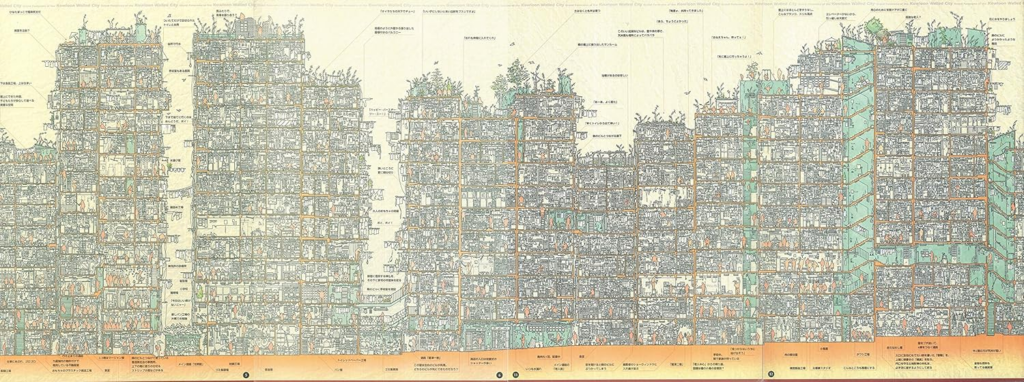
These posts led to the question:
- https://news.ycombinator.com/item?id=42425770
- https://mascontext.com/issues/trace/kowloon-walled-city-heterotopia-in-a-space-of-disappearance
- https://cohost.org/belarius/post/6677850-architectural-cross
- https://amzn.to/3BHmjqa
A heterotopia is a concept introduced by the French philosopher Michel Foucault to describe real-world places that function as “other spaces,” existing simultaneously within and outside of the usual norms and structures of society. These spaces are characterized by their ability to juxtapose or connect several different spaces, times, or meanings, creating a unique environment that challenges or reflects on the dominant social order.
Key Features of Heterotopias
- Real and Imagined Duality: Heterotopias exist in physical reality but often carry symbolic, cultural, or ideological meanings that separate them from everyday spaces.
- Cultural Universality and Specificity: They are found across all cultures but take on different forms depending on the society and its values.
- Multiple Spaces Juxtaposed: They bring together disparate or incompatible spaces within a single location.
- Temporal Connections: Heterotopias often have unique relationships to time, such as commemorating the past (museums) or embodying transient experiences (festivals).
- Restricted or Exclusive Entry: Access to heterotopias is often regulated, either through physical, social, or symbolic means (e.g., rituals, rules, or societal norms).
- Illusions and Contradictions: They may challenge, invert, or reinforce societal norms by functioning as mirrors or distortions of the broader society.
Examples of Heterotopias
- Cemeteries: Spaces that are both deeply tied to the living world and the “other world” of the dead.
- Museums and Libraries: Places that attempt to encapsulate and preserve all times and knowledge.
- Theaters and Cinemas: Spaces where imaginary worlds are enacted within a confined physical environment.
- Gardens: Historically seen as microcosms of the world, blending nature and human design.
- Carnivals or Festivals: Temporarily overturn societal norms, creating “time out of time.”
- Ships (as described by Foucault): Mobile heterotopias that connect disparate parts of the world while being self-contained and isolated.
Heterotopias are not just physical locations but also conceptual lenses through which we can analyze and understand the complexity and diversity of human spaces.
